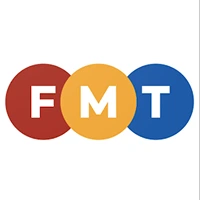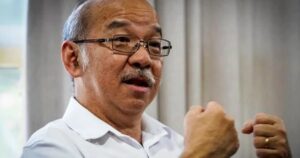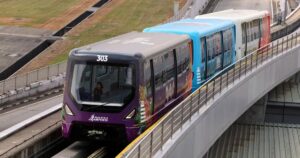
The RM100 one-off cash transfer under the Sumbangan Asas Rahmah (SARA) programme looks like a big success.
According to the ministry of finance, cumulative transactions under the one-off RM100 cash programme hit RM425.2 million in the first five days since launch, with more than 6.6 million recipients making purchases nationwide.
The RM425.2 million spent in five days is only 19.3% of the RM2.2 billion given to 22 million adults and only 30% of recipients spent the money immediately.
While many will have spent it all, the data also suggests that most are spreading it out with the average amount used only around RM65 per person.
Although there was an immediate surge on the first day causing some technical issues, these have been fixed quickly and successful transactions rose from 79% to 99.5%. This overload may just be due to the launch on the national holiday with people stocking up for family celebrations.
It does not appear that the surge indicates tight finances among consumers. In fact, it looks like many consumers, around 70% of recipients, are holding on and will spend slowly until the December cut-off.
Many high-income people may not use the money quickly or at all because they are less likely to shop at the more than 7,300 registered retail outlets nationwide that accept the transactions.
It might also be that only those in the lowest income groups used the RM100 immediately because they are in greatest need and most likely to shop at the main outlets accepting MyKasih and MyKad payments.
We will only see a small effect on consumption in Q3 because the spending is right at the end of August. The RM50 million spent on Aug 31 will have a multiplier effect equivalent to RM77 million. This is relatively limited.
The bigger effect will be in Q4 where the bulk of the RM2.2 billion will have a multiplier effect equivalent to RM3.6 billion adding 0.19% to GDP.
By December the government will know whether a universal payment is necessary or whether rich people actually do not use it. They can then target future assistance.
They will also know how quickly people spend it and whether the restriction to particular outlets is a bottleneck. If it is they can expand outlets or allow people to take the money in cash from the MyKad to spend as they choose.
There are positive lessons for future policy. The most important of which is that universal cash transfers work. They are popular and they do not cause economic harm.
Malaysia now has cash transfers at the heart of social policy, distributed universally, directly to eligible individuals, without pre-conditions. The final step is to make these payments on a monthly basis.
“Oh but we can’t afford it!” I hear you cry. Well let’s do the math.
RM100 for 22 million people each month would cost RM26.4 billion. The government is already spending RM15 billion on STR/SARA which leaves a balance of RM11.4 billion.
Diesel subsidy reform saved RM7.5 billion and electricity reform saved RM4 billion which is RM11.5 billion. The SST increase raises RM10 billion, add the RM1.5 billion from savings to chicken subsidies and you get RM11.5 billion. Either of these already pays the balance, without touching the projected savings from RON95 rationalisation.
The additional RM11.4 billion in consumption multiplies to RM19 billion which adds 1% to GDP growth next year at a time when growth will be sorely needed.
So there is no better time to learn the lessons and introduce a RM100 Universal Basic Income in Budget 2026.
The views expressed are those of the writer and do not necessarily reflect those of FMT.






